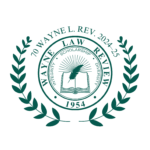What We Learn in Troubled Times: Deregulation and Safe Work in the New Economy
Even before the financial crisis of September 2008, the average American worker would confidently report we live in troubled times. Staggering income inequality has become the norm in the United States. Medical care has become an unaffordable luxury for working Americans who lack employer-provided health insurance. New forms of work organization and employment have rendered once secure jobs vulnerable and, in some cases, removed those who labor from the protective ambit of labor and employment law. A weakened labor movement is increasingly at pains to protect those employees with union representation from the fluctuations of global markets. Of course, most American workers have no representation at all. Read More …
